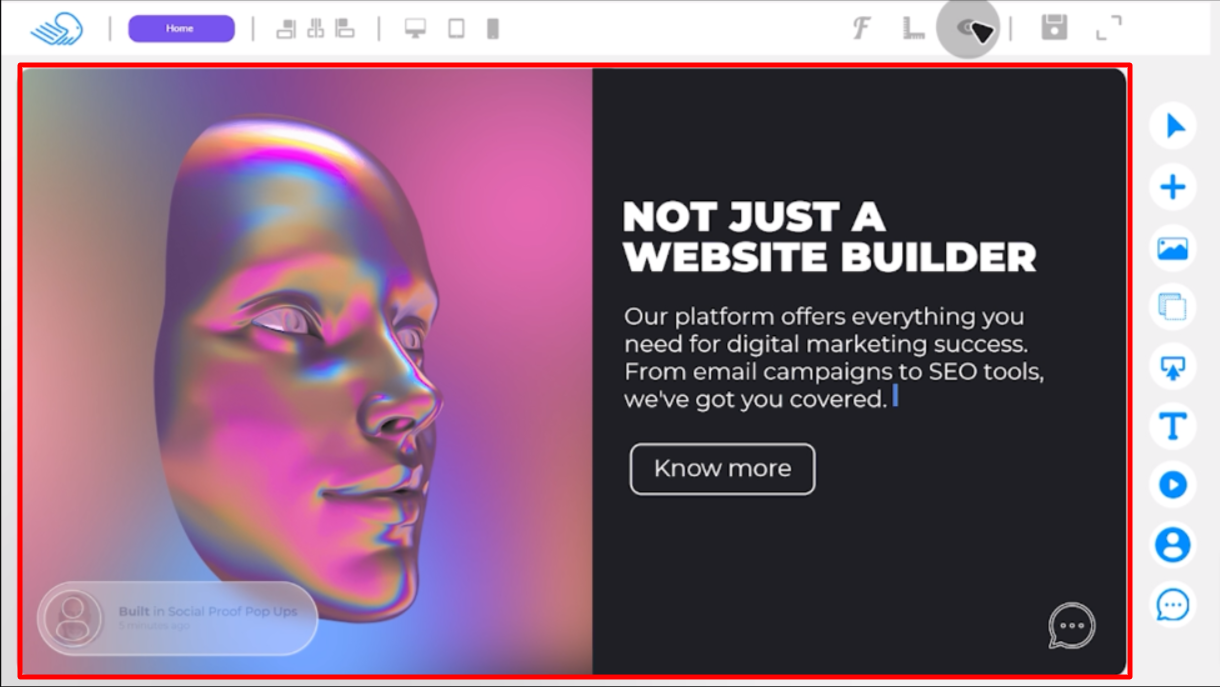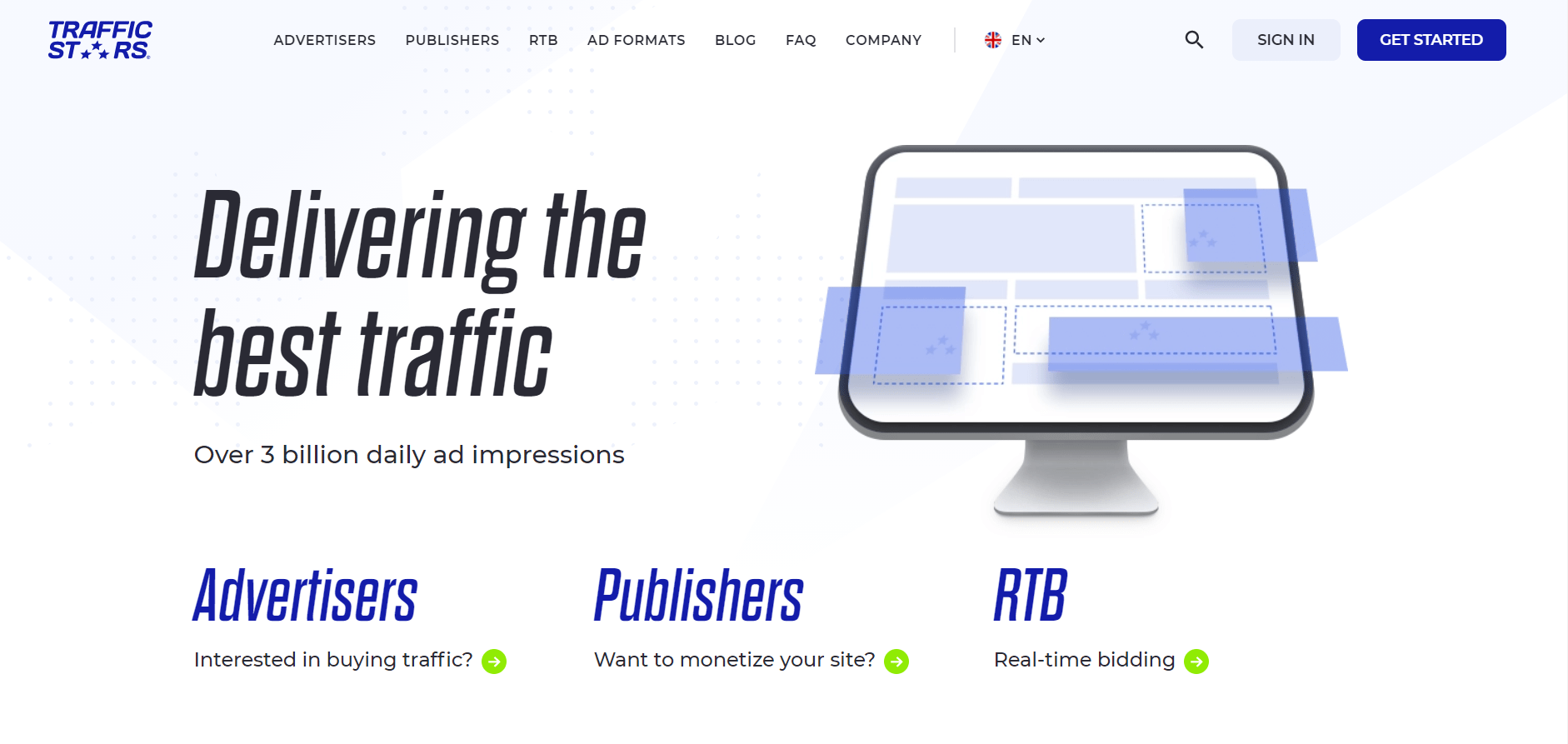Want to start affiliate marketing but don’t have any money?
No problem! I’m here to show you 7 easy steps to begin without spending anything.
It might sound a bit hard at first, but it’s really possible. I’ll help you understand everything from picking a good topic to using free tools.
Today, we’re going to look at how you can begin your affiliate marketing journey without spending any money.
Let’s get started and see how you can do this step by step! 🌈💡
Content Outline
Here’s how to get started with affiliate marketing in 7 easy steps
The affiliate marketing industry is a great way to earn money online. You promote products or services for a company and get your own special link. When someone clicks on your link and buys something, you get paid a small part of the sale.
It’s great for everyone: the customer finds what they need, the company sells their stuff, and you get some cash. As an affiliate, you join a program and get a link that’s just for you.
This link lets the company know that you sent the customer so they can pay you for helping them.
Now, let’s look at 7 easy steps to get started and do well in affiliate marketing! 🌟🔗💰
1. Select the right niche

Choosing the right niche in affiliate marketing is like finding the perfect spot to set up a shop. It’s a specific area you focus on, something you know a lot about and are excited by.
Think of niches like hobbies or interests – for example, fitness, personal finance, or fashion trends.
Having a niche is awesome because you become kind of an expert in that area. Less competition and more trust from people who visit your site.
Plus, it’s good for SEO – that’s just a fancy way of saying it helps your website show up in Google searches better. The more specific your niche, the clearer your plan and the easier it is to pick products to talk about.
Here’s what to think about when choosing your niche:
- Always in Demand: Pick a niche that’s always needed, like health tips. Avoid seasonal ones like holiday decorations.
- Multiple Affiliate Programs: Don’t rely on just one program. For example, if you’re into tech gadgets, explore different tech affiliate programs, not just the big names.
- People are Searching for It: Choose something that lots of people look up online.
- Manageable Competition: Go for a niche that’s not too crowded but still popular enough to make money.
- You’re Passionate About It: Pick a topic you love. It’s more fun, and your enthusiasm will show.
- Profitable: Some niches can make more money than others, but they might also be more competitive.
Let’s look at some real-world examples:
BloggersIdeas.com: This site zeroes in on blogging and digital marketing. They offer insights, tools, and tips for bloggers of all levels.
🌟 Pro Tip: Start super specific. For instance, instead of just “tech,” focus on “smart home technology,” or even narrower, like “smart lighting solutions.” As you build your reputation, you can broaden your scope.
By concentrating on a niche, you position yourself as an expert, earning trust and making your site Google-friendly. Plus, it’s easier to connect with your audience when you’re talking about something you’re genuinely interested in.
2. Get yourself a Website or a Place to Share your Ideas.

Starting affiliate marketing is pretty cool because you don’t need a lot of money to begin. While having a website is a great idea, there are other ways to share and talk about products.
Making a website is not too hard or expensive. It involves buying a domain (like a web address) and paying for hosting (which is like the space where your website lives online).
Starting costs can be really low, maybe around $2.98 for the domain and about $1.99 each month for hosting. You can look for domain names on Brandsnap and use Siteground for affordable hosting.
But if a website isn’t your thing, no worries! There are lots of other ways:
- If you like writing, Try making a blog or sending out emails.
- If short posts are your style, Use Facebook, Twitter, or LinkedIn.
- If you’re into photos, Instagram or Pinterest can be great.
- If you’re a talker, A podcast might be fun (remember, it’s not easy to share clickable links). Check out this podcast; it’s my favorite way to get tips on digital marketing.
- If you love making videos, How about TikTok or YouTube?
💡 Pro Tip: Start with just one method first. This keeps things simple. Once you’re good at it, you can think about trying other ways too.
To make money in affiliate marketing, you need to join affiliate programs or networks. Think of programs as partnerships with specific brands, while networks are like big malls with lots of different brands’ programs.
But not all programs are the same. Here are six things to look for:
- How Much You’ll Earn (Commission Rate): Look for good pay rates. For example, some programs may offer commission rates of up to 50% or more. Additionally, look for affiliate programs that offer recurring commissions, as these are the most profitable.
- Time to Make a Sale (Cookie Duration): This is how long you have after someone clicks your link to make a sale and still get paid. Longer is better. For example, a good cookie duration would be at least 30 days.
- How Often People Buy (Conversion Rate): Even if the pay rate is low, it’s good if lots of people buy the product. For example, if a product has a 10% conversion rate, then for every 10 clicks, one person will end up buying the product.
- Earnings Per Click (EPC): This shows how much you make each time someone clicks your link. It helps you figure out which products are best to promote. For example, if a product has a $10 EPC, you will make $10 each time someone clicks your link. EPC is an important metric to consider when deciding which products to promote. The higher the EPC, the more money you can make.
- Quality of the Product: Choose good products from brands people trust.
- Customer Support: Pick programs where you can get help when you need it.
- Take your time to decide: Once you have found a program, make sure to review the terms and conditions before signing up. Additionally, research the program to make sure it’s a good fit for you and your content.
When you’re new, it’s okay to start with the usual terms from affiliate programs. As you get better, you can ask for better deals.
For beginners, Amazon Associates is a great program to start with. They have tons of products. Later, you can also join networks like Clickbank, Shareasale, Avantlink, or Awin.
Don’t just sign up for any program. Find the right ones that fit your style. If you’re in a network, search for brands or keywords related to your topic. You can also search on Google for a brand’s affiliate program, like “[Brand] affiliate.”
Most brands have a link to their affiliate program at the bottom of their website. You can search for “affiliate” on their site to find it. You’ll usually find a form to sign up.
💡 Pro Tip: If you can’t find a program for a brand you like, ask them if they have one or if they’re planning to start one.
3. Create Good Content

Creating great content is super important for success in affiliate marketing. It’s all about getting people to your site and interested in the products you talk about.
Whether you’re writing on a blog, posting on social media, or making videos, your content has to be really useful and engaging. If it’s not, folks won’t stick around or be interested in what you’re promoting.
Let’s explore some types of content you can create:
- Informational Content: Write articles or make videos that teach people something related to your niche. For example, if you’re into WordPress, you could make a guide about the best WordPress plugins for bloggers. Add useful tips and links to your affiliate products.
- Reviews: People often check reviews before buying. You could review specific WordPress plugins, detailing their features, pros, and cons. This way, your audience gets an honest assessment before they decide to buy.
- Comparisons: Put different products or services side by side. This helps your readers see the differences and decide what they need—for instance, comparing two popular WordPress SEO plugins and discussing which is better for different blogging needs.
- Round-ups: Create lists of top products in a category. Like a post about the ‘Top 5 WordPress Plugins for E-commerce Websites.’
- Different types of visitors come for different types of content. Some are just looking for info, while others are ready to buy. Having a mix of both is a smart move.
Here’s how to make your content stand out:
- Understand Your Audience’s Problems: Know what challenges your readers face. For instance, they might be looking for the easiest WordPress plugin to improve website speed.
- Offer Solutions: Give helpful advice or tips, such as recommending the best performance-boosting plugins.
- Be Unique: Do something different, like creating a video tutorial on setting up a complex plugin.
- Build Trust: Be honest and unbiased in your reviews. Your audience relies on your recommendations, so being credible is key.
- Highlight Benefits: Explain how a product can be helpful. Maybe show how a particular plugin can make website management easier.
- Connect Emotionally: Share personal stories or experiences. Talk about your own journey in finding the perfect plugin for a specific need.
- Encourage Action: Motivate people to check out the product or service. End with a call-to-action like, “Try this plugin for better website performance.”
- It’s good to have a variety of content, from informative articles to product reviews. This approach helps your audience and also shows search engines that you’re knowledgeable in your field.
🚨 Don’t forget, if you’re using affiliate links, you must tell your readers. It’s a legal requirement to be transparent about earnings from their purchases.
4. Adding Affiliate Links to your content

Adding affiliate links to your content is like putting the cherry on top of a cake – it’s important to do it right! You don’t want to add too many links because that can make your website look spammy, hurt how it shows up in Google searches (SEO), and turn people off.
Here’s how to add affiliate links smartly:
Be Clear with Your Links: Always tell people where your link will take them. Don’t trick them with a misleading link, like saying it’s a cute cat video when it’s really a product.
Make Links Obvious: Use clear phrases for your links, like “Buy this product here.” You can use text links or buttons that are easy to see.
Offer Choices: Don’t just link to one store. If you’re talking about a product like the latest iPhone, give links to buy it from different places, like Amazon and Best Buy. This makes you seem more trustworthy.
Put Important Links Early On: In articles like product round-ups, people often want to see the links right away. So, put your product recommendations and links at the start. You can use special boxes or tables to highlight them.
Answer Quickly: Don’t make people read through a long article to find what they need. If you have a solution or an answer, put it at the beginning. For example, if you’re writing about alternatives to a software tool, list the best options right at the start.
5. Increase traffic to your website or platform

Getting people to visit your website or platform is super important in affiliate marketing. You want them to see and click on your affiliate links, right? But getting traffic can be tricky.
There are two main kinds of traffic: free and paid.
Paid traffic is like buying ads. You pay money to show your content in places like Facebook Ads or Google Ads. This can get people to your site quickly, but it costs money and can eat into your profits.
Free traffic, on the other hand, doesn’t cost money, but it does take time and effort. The good news is that it can bring great results over time.
Here’s how you can get free traffic:
Organic Search (SEO): This means making your content good for Google search. When people search for something related to your content, your site shows up in the results.
YouTube: Make videos that YouTube suggests to people. Your videos can also show up when people search on YouTube.
Social Media: Use platforms like Facebook, Twitter, Instagram, and LinkedIn to talk to your audience and share your content. This can bring people back to your website.
Email Marketing: Collect email addresses and send out newsletters or special offers. This encourages people to visit your site.
Influencer Marketing: Reach out to influencers in your field and ask them to share your content. This can help you reach a larger audience.
Guest Posting: Write articles for other websites in your niche. They usually let you put a link back to your site. This way, you can reach their audience and bring them to your site.
While free traffic sources are great because they don’t cost money, they do require a lot of work and patience. In the long run, focusing on free traffic is a good strategy for your affiliate marketing business.
6. Track And Optimize Your Affiliate Marketing Performance
Doing well in affiliate marketing is all about figuring out what works best and then doing more of it.
Luckily, you can track almost everything in affiliate marketing, like who’s visiting your website, what they’re clicking on, and what they’re buying. But you need to use some tools to understand all this.
Here’s a simple breakdown of some tools and how they help:
Google Analytics: This tool shows you how many people visit your website and what they do there. It’s like having a spy camera in a store, watching how customers move around and what they look at.
Example: You can see that a lot of people visit your page about “Best Outdoor Grills,” but not many click on the affiliate links. This might mean you need to make the links more noticeable.
Google Search Console: This is for those focusing on getting traffic from Google searches. It’s like a report card showing how well your site is doing in Google’s eyes.
Example: Search Console might tell you that lots of people are finding your website by searching for “outdoor grill reviews,” which means this is a topic you should maybe focus on more.
Lasso: While Google tools are great for general website tracking, they don’t track your affiliate sales. That’s where Lasso comes in. It’s like a detailed sales report showing exactly how much you’re earning from each link.
Example: Lasso could show you that links to a specific grill brand are making more money than others, so you might want to promote that brand more.
By using these tools, you can see what’s working and what’s not. If you notice some articles or products are really popular, you can create more content around those. Or, if some links aren’t getting clicks, maybe you need to change where they are on the page or how they look.
It’s all about testing, learning, and tweaking to get the best results from your affiliate marketing.
How Much Money Can You Make From Affiliate Marketing?
How much money you can make from affiliate marketing really depends on a bunch of things, and it varies a lot?
Some people make tons of money, like millions, while others might make a little bit. When you’re just starting, you might make anywhere from nothing to about $1,000 a month. But as you get better and more experienced, you can earn more.
Here’s a rough idea of what you might expect:
- Beginner: $0 to $1,000 per month
- Intermediate: $1,000 to $10,000 per month
- Advanced: $10,000 to $100,000 per month
- Expert: $100,000 or more per month
Of course, making a lot, like over $100,000 a month, is pretty rare. But it’s not impossible. Jitendra Vaswani began his career as an SEO in a corporate company and is now one of India’s advanced and best digital marketers.
What Affects how much you can make? Well, a few things:
- The Niche You Choose: Some topics, like finance, health, and technology, can make more money because they have a lot of people interested in them and sometimes pay higher commissions.
- How Commissions Work: Different brands and types of products pay different amounts. Digital products often pay more.
- How Many People Visit Your Site and Who They Are: You want lots of visitors, but they should be people who are really interested in what you’re promoting.
- How Good Your Content Is: Your content should be valuable and convincing, the products you promote should be good, and your audience should trust you.
So, the amount you can earn from affiliate marketing can vary a lot. It’s like trying to measure how long a piece of string is.
But if you’re willing to try different strategies, put in the time and effort, and find what works best for you and your site, you can make a decent amount of money.
Quick Links
- How to Promote Affiliate Links?
- How To Build Affiliate Marketing Website?
- Is Affiliate Marketing Still Worth?
- How To Become An Affiliate Marketer?
- Best Affiliate Marketing Niches?
Conclusion- How To Start Affiliate Marketing In 2026?
Wrapping it up and making money through affiliate marketing is definitely not just sitting back and relaxing. It requires quite a bit of work at the start.
You’ll need to put in effort, try different things, and keep improving your strategies. But if you follow these steps, you’re on the right track to making your first sale in affiliate marketing.
You can follow me for more advice on affiliate marketing, you can even write down to me in the comments section and I shall try and resolve your doubts to the best of my capability.
